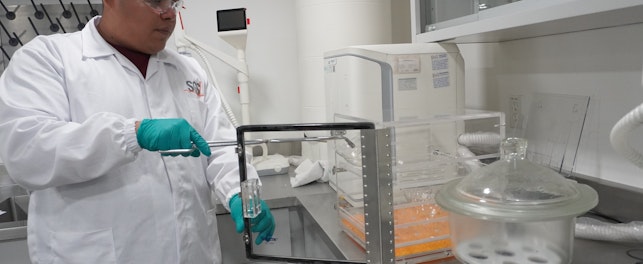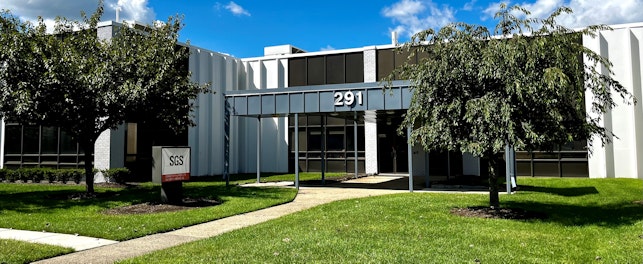COVID-19 has generated a seismic shift in our use of wireless technology. Homeworking, educating, communicating, socializing and entertainment have all become online pursuits during lockdown. We look at how the industry has responded to these changes.
Impact of COVID
According to data released by CTIA, the trade association representing the US wireless communications industry, network operators are reporting a significant increase in usage since February 24, 2020:
- Voice usage – up 12.2%
- Data usage – up 28.4%1
This is a trend that has been seen all over the world. For example, Nigeria has reported an 18.1% growth in the telecommunications sector and one UK internet service provider has reported a near doubling of its services during lockdown.2 With consumers having to remain physically distanced during lockdown, many have turned to online technologies for both work and education, as well as entertainment and socializing with family and friends.3
Every generation has been impacted by these changes. One Irish study found that 71% of children with smartphones admitted to increasing their usage, while a UK survey reported online video calls made by the over 65s went up 22% in February and 61% in May.4 With face-to-face communication no longer available to us, the online world has become our preferred method for keeping in contact.
The shift has been rapid, but it is not without precedent. Many countries were already seeing greater use of online technology; COVID-19 just intensified the speed of transition. It should therefore be assumed that, while there will inevitably be a reduction in online usage as we go back to our schools and offices, some people will choose to continue to work and communicate in this fashion.5
Industry Response
The wireless industry has responded robustly to the increased demand for network capacity. WiFi hotspots, services in new spectrums, etc. have all been quickly deployed. At the same time, many countries have continued with their introductions of the 5G network. These approaches have enabled networks to ensure there is sufficient capacity to cope with the increased demand for voice and data services, alongside the adoption of other mission critical applications and connected & automated vehicles (CAV).
Advances in wireless technology have also empowered our ability to respond to the COVID-19 pandemic. Countries are using innovative Internet of Things (IoT) solutions, such as contact tracing applications, to mitigate the impact of the virus. These utilize a variety of technologies, including Bluetooth Low Energy (BLE), WiFi and Sigfox, incorporated into bands, bracelets, and other consumer wireless devices. The integration of this technology has greatly enhanced the ability of universities, offices, and medical facilities to return to some semblance of normality.
Opportunity and Risk
As more and more workers become accustomed to working remotely and children are habituated to homeschooling, there has been increased demand among consumers for smart home devices. These labor-saving devices are seen as a good way of reducing stress while being stuck at home.
Domestic smart technology was already a robust market, with a September 2019 report estimating a five-year compound annual growth rate of 14.4%. COVID-19 has had no negative impact on this growth, with global shipments of smart home voice-control devices predicted to rise by 30% in 2020. It is postulated that one reason for this increased demand, apart from the greater need for streaming services inside the home, is that using voice-activated equipment decreases the possibility of SARS-CoV-2 transmission.6
The rush to launch new labor-saving devices utilizing the latest wireless technology does, however, come with some concerns. Consumers now demand products that are more than just regulatorily compliant. They are no longer willing to accept products with poor battery performance, security, or an inability to connect with existing technologies. In addition, they want new products that support more frequencies to allow greater capacity and coverage.
Manufacturers need to consider these requirements during the design phase, factoring them into a comprehensive testing strategy that goes beyond regulatory compliance to incorporate performance. By approaching product development in this way, manufacturers and suppliers can ensure their products meet consumer expectations while expediating time-to-market.
COVID-19 has accelerated the shift towards greater usage of wireless technology. The industry has responded well to this increased demand, which, in turn, has created an opportunity for new technologies to be deployed into a welcoming market. To benefit, manufacturers need to ensure their products meet the expectations of consumers alongside regulatory and security requirements.
SGS Solution
SGS offers a comprehensive range of services to help electrical and electronic (E&E) manufacturers successfully bring their products to the marketplace. Backed by a global network of high-tech laboratories, our experts have considerable experience in performing EMC and radio frequency (RF) testing, alongside comprehensive quality, safety and performance testing solutions for E&E and other consumer products. We can also ensure products comply with the latest specifications for IoT and 5G services, including RF and protocol test requirements in both sub-6GHz (FR1) and mmWave (FR2) frequencies.7
Learn more about our wireless services.
Parthiv Parikh
Global Business Development Manager
SGS Consumer and Retail Services
t: +1 858 304 9154
Amy O’Regan
Key Account Manager
SGS Consumer and Retail Services
t: +1 858 592 7100
References
1 Network performance
2 Making sense of the increased data usage since COVID-19 & UK coronavirus lockdown has led daytime internet usage to more than double
3 Coronavirus: Why quizzes are bringing people together under lockdown & Online quiz is the buzzword this pandemic
4 Children significantly increase use of technology during lockdown & Enjoy later life by staying healthy and connected from home
5 COVID-19's impact on internet disruptions
6 Double-edged sword of smart home tech’s Covid boost
7 Keysight’s 5G Conformance and Carrier Acceptance Test Solutions Selected by SGS



